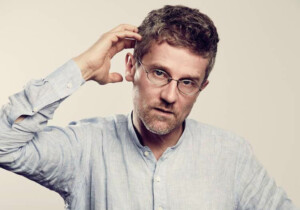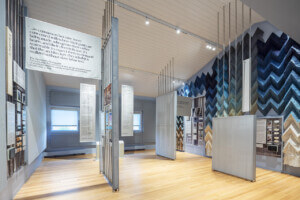Did you know that you can now explore a cavelike house on the Spanish island of Minorca? Or soak in some quality ASMR content at ArkDes in Stockholm? Or ponder utopia in Los Angeles? I have no plans to hop on a flight anytime soon, but a slate of new online exhibitions has been keeping me busy while mostly homebound in New York City. It’s feasible to visit all of these shows in the space of a few minutes or a few hours. (What’s the rush—have you got somewhere else to be?) And if any one of them isn’t to your liking, it’s easier than ever to get out of Dodge: Simply close your browser window and never look back.
Ca’n Terra: Architecture of the Earth is an absorbing presentation of an otherworldly dwelling by the Madrid- and Boston-based firm Ensamble Studio. Partners Antón García-Abril and Débora Mesa carved the house from the remnants of an abandoned quarry in 2018, but the concise exhibition was newly commissioned by ‘T’ Space of Rhinebeck, New York, an arts organization founded by architect Steven Holl.
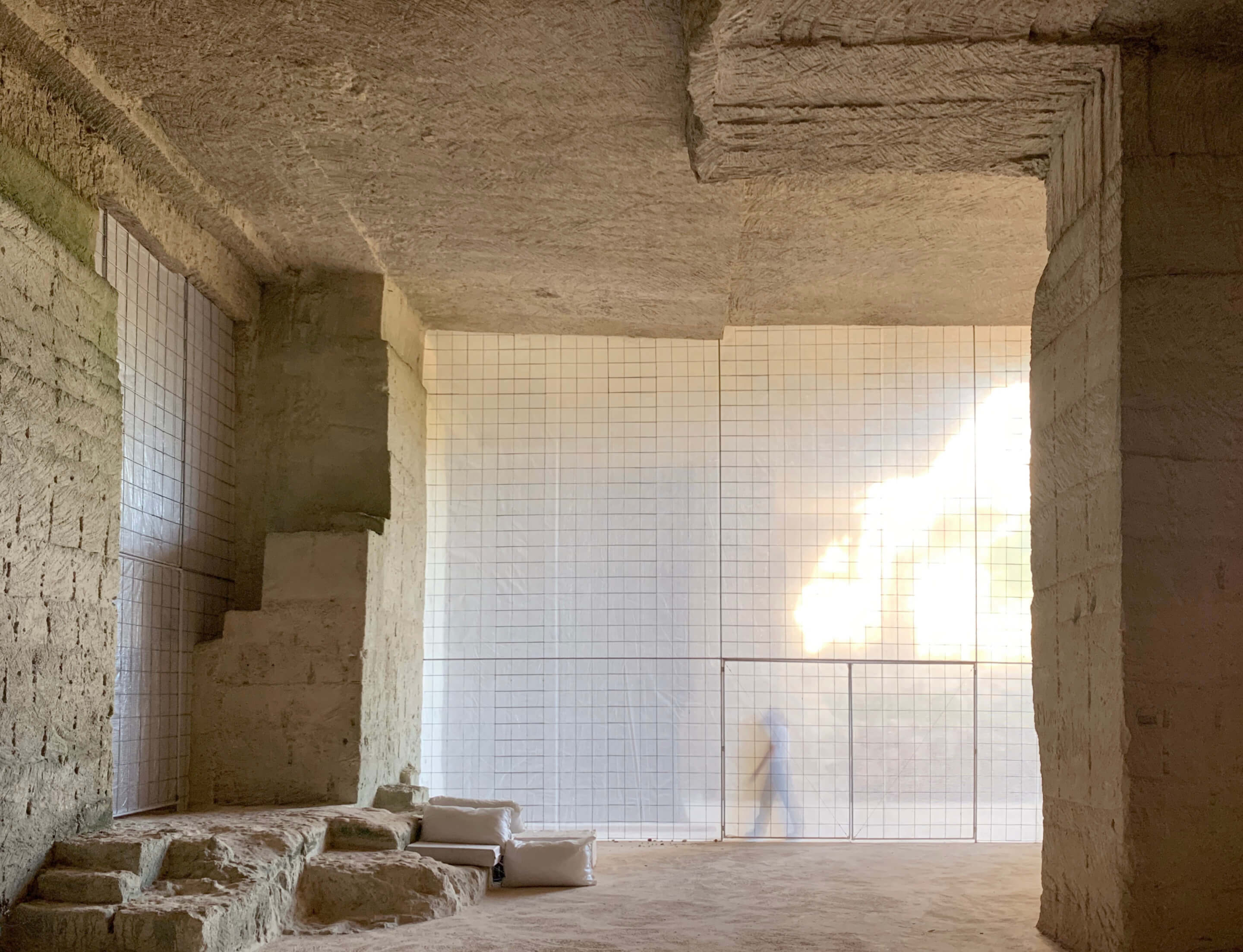
A virtual walk-through of Ca’n Terra, as the dwelling part of the quarry is known, leads you into the depths of the mostly empty caverns. A few rudimentary conveniences are in place, such as a kitchen sink in an otherwise empty kitchen, though it’s unclear whether the tap is connected to running water. A bike is parked against the wall in one room, and a few cushions are laid out in another. The interiors are lightly staged in the manner of an online real estate listing, only spookier. (They bring to mind Gae Aulenti’s ever-so-chic cave house La Grotta Rosa, completed in 1972 on the Amalfi Coast.)
But the highlight of Ca’n Terra is a set of 3D laser scans of the site as García-Abril and Mesa initially encountered it. (The pair maintain they found it by chance.) The images are positively spectral. In one scan, the hollows of the former quarry appear ghostly and glowing against a black background. In others, you see through the earth as in an X-ray. Equally dramatic is an animated GIF that demonstrates the architects’ blunt solution to interior lighting. First we see the flash of a controlled detonation, then an enormous block of Marés sandstone falls 20-some feet to the floor, a tree coming along for the ride. An indelicate procedure that García-Abril and Mesa describe as “carving light.”
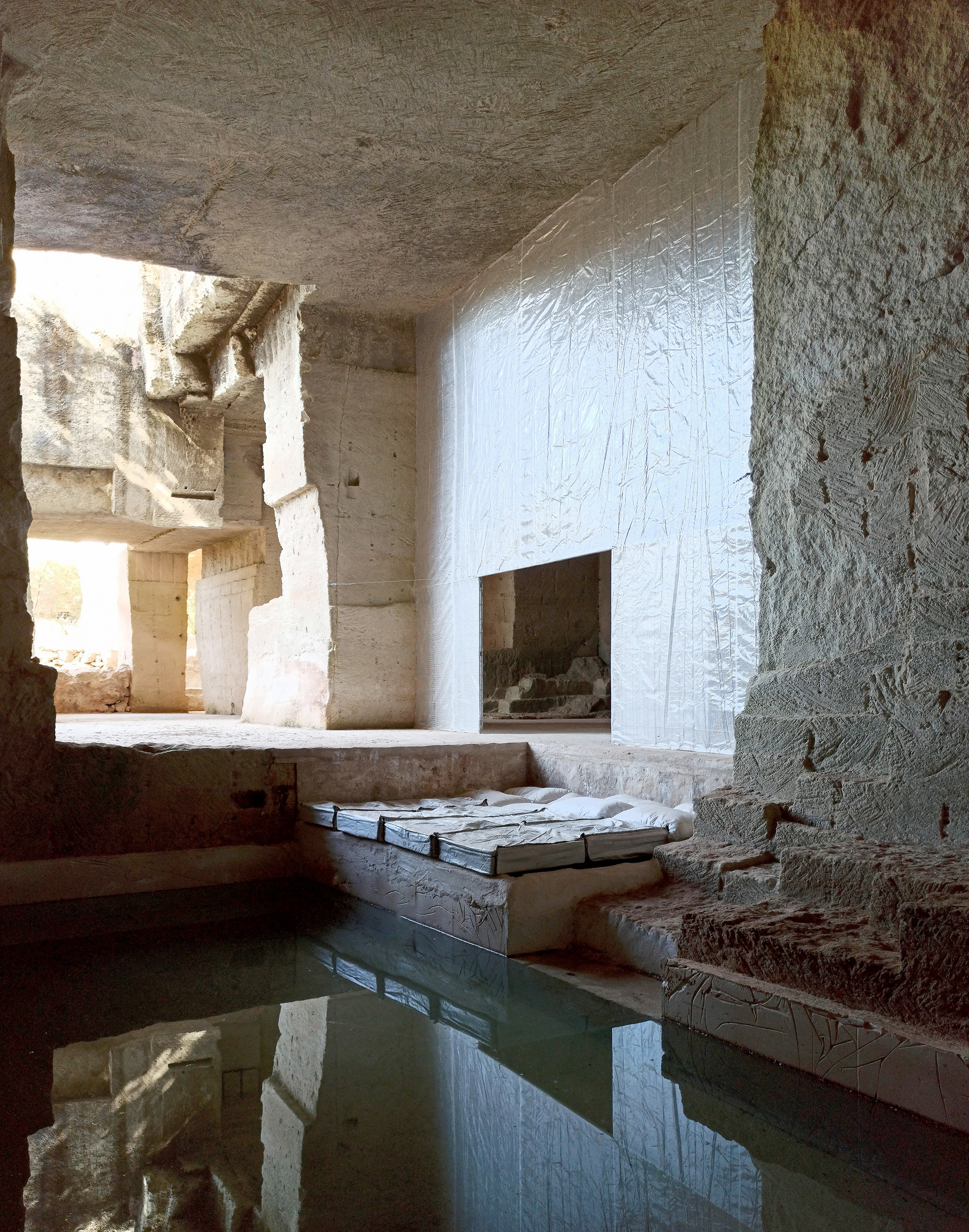
The aurally charged exhibition Weird Sensation Feels Good is a perfect chaser to follow on the many visual, earthy delights of Ca’n Terra. The show claims to be the first museum exhibition devoted to ASMR (autonomous sensory meridian response), the mysterious sensation—often experienced as a subtle tingling—triggered when listening to recorded whispers, tapping, or other seemingly mundane soundscapes. Although Weird Sensation was installed at ArkDes in Stockholm and opened on April 8, its online format is a perfect fit for a topic that first found its foothold in an online subculture on YouTube. In his hushed, 15-minute audio introduction, curator James Taylor-Foster situates ASMR’s place in a wider cultural universe encompassing Bob Ross’s landscape paintings and Björk’s iconic explainer on the mysterious inner workings of her television. Much of the popular discourse on ASMR focuses on its uses as a means of self-soothing and self-care, and Taylor-Foster explores these aspects with an admirable thoroughness. But whether or not the phenomenon has a place in your day-to-day life, its presentation here is both thought-provoking and literally sensational. It’s a show that’s not to be missed and requires a visit that ought not be rushed. As Taylor-Foster recommends, “make yourself comfortable. Feel free to sit or lie down.”
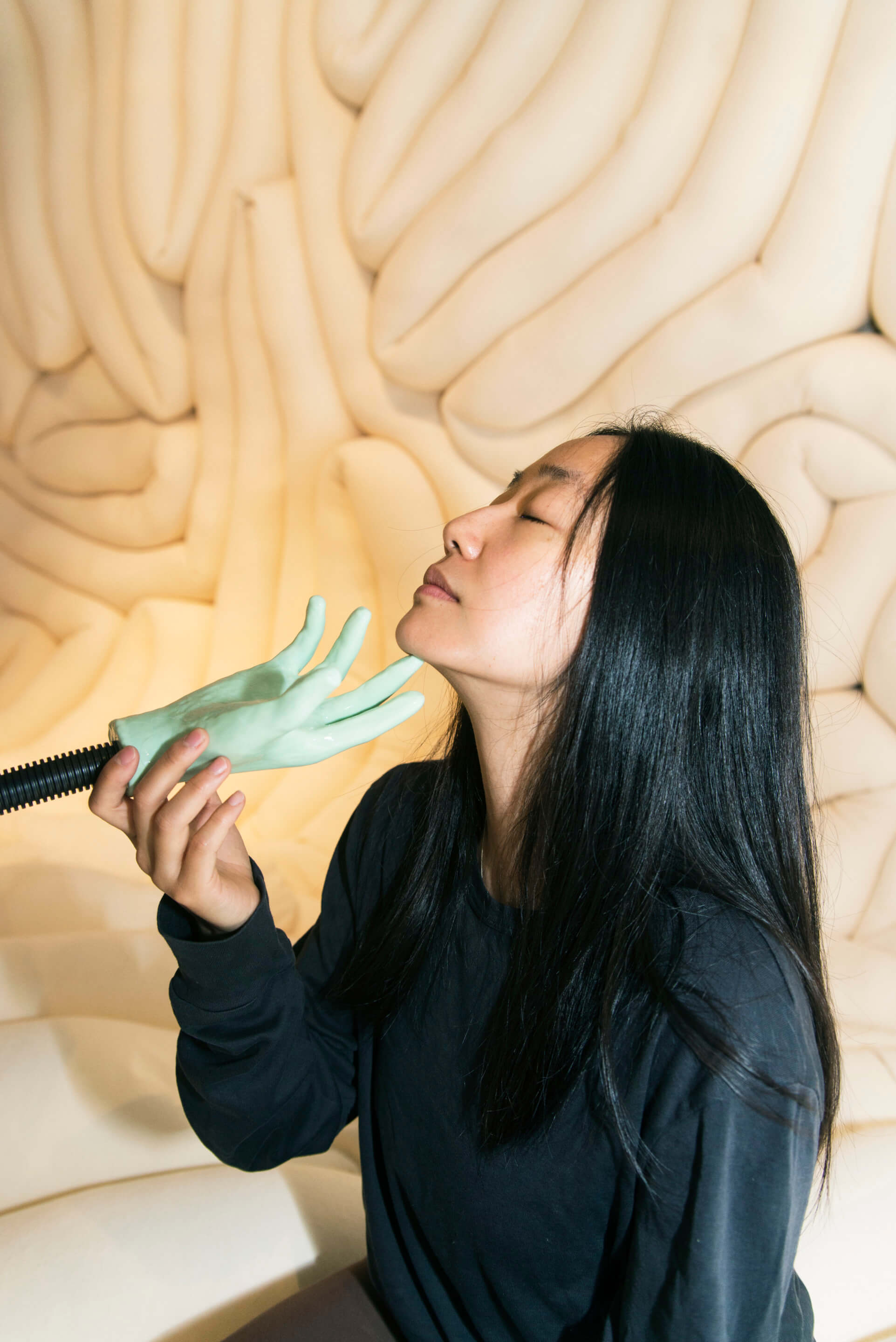
(Elsa Soläng)
As Weird Sensation opened to the public back in June, the Los Angeles–based A+D Museum announced its decision to permanently close its doors in the downtown Arts District amid the challenges of the pandemic. Its first all-digital exhibition, The Future of Space, had its run over the summer, with several dozen contributors invited to posit new formulations of the spatial in all its varieties: personal, public, mental, digital, and so on. The show ended in mid-September—the digital gallery is “closed for construction,” according to the museum website—but you can still view many of the contributions on the organization’s Instagram feed (@aplusd_la). The Future is full of compelling work, such as Galo Canizares’s animated scenes reflecting on the design potential of the demo video (a new site of “paper architecture,” perhaps), Benjamin Vanmuysen’s geometric delineations of forms afloat in the digital ether, or Seleta Reynolds and Elizabeth Timme’s poignant photographic project Social Sickness. The latter depicts Instagram-ready scenes of miniature figures swept up in a carnivalesque landscape of confetti, coiled ribbon, and polychrome polka dots. But for all of this outward frivolity, the project text proffers a blistering critique of the rosy future that our progressive imagining (and designing) often assures us will arrive any day now: “Excuse our French,” Reynolds and Timme write, “but this utopia is bullshit.”
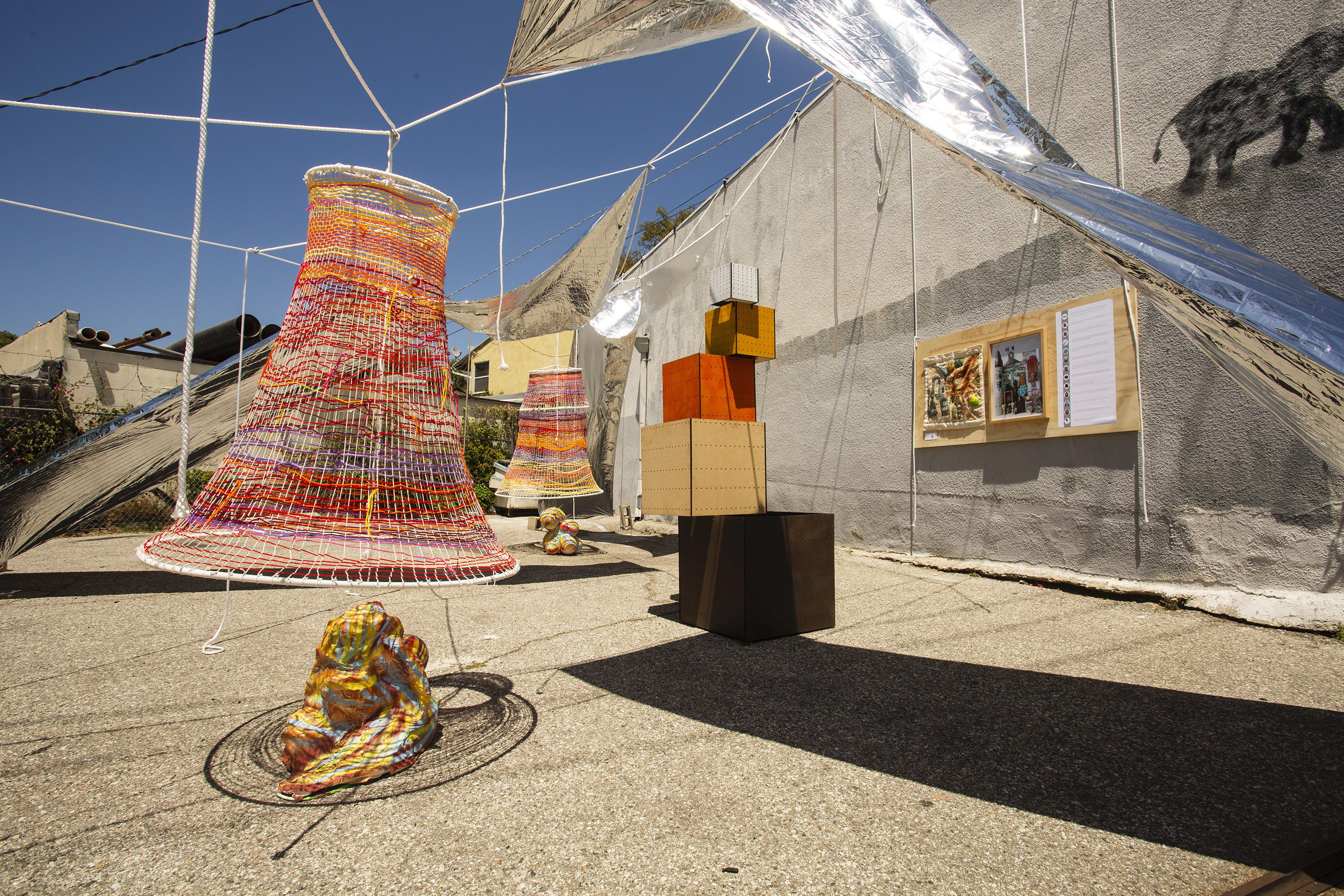
The L.A. Forum for Architecture and Urban Design’s summer exhibition Every. Thing. Changes. picks up on this thread to document the “collective view of life in Los Angeles in its new decade.” Rather than a design think tank convened to map the outlook of life in the city amid “these uncertain times,” a heartfelt ethic of reflection and appreciation pervades the exhibition. It abounds with tenderly presented personal histories and poetic works, many of them activated or produced during a series of events convened in early August at four sites across L.A. The show’s strengths likely stem from its unique development: Every. Thing. Changes. was kick-started by a corps of writers and poets who then invited designers and artists into the fold to extend the conversation into space.
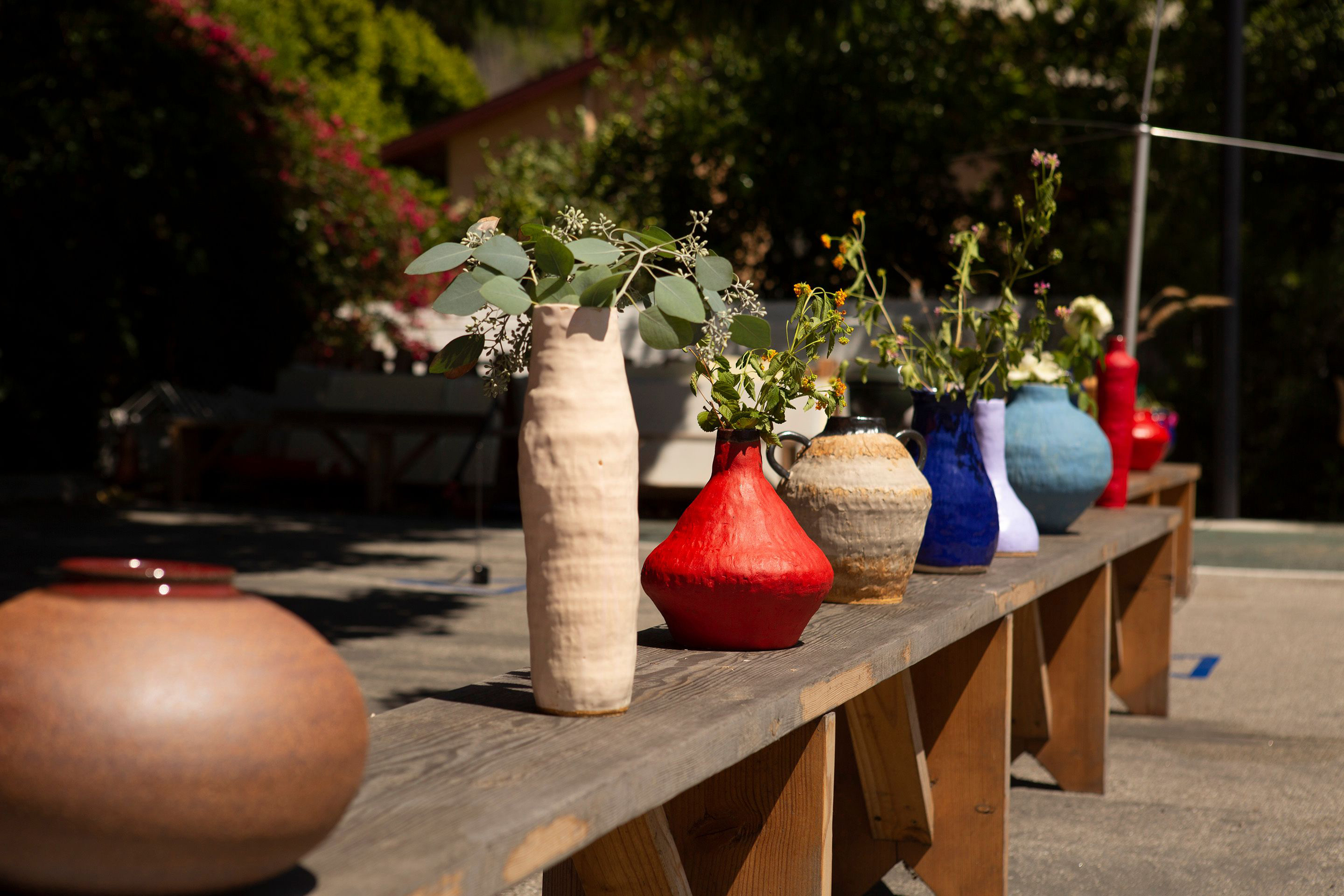
Everything changes indeed, but not always for the worse. As all these exhibitions demonstrate, the efforts of enterprising curators, artists, and architects are prompting a spate of creative new work in the field. While the initial coronavirus outbreak and subsequent lockdowns last spring left many curators and organizations scrambling to pivot to virtual formats, these projects are for the most part digital-born. It’s a promising first wave of experiments that might turn out to be the leading edge of a renaissance for exhibition-making, both in digital and nontraditional forms. Against the backdrop of the ongoing pandemic, struggles for social justice, and climate catastrophe, these exhibitions reach beyond walls and offer opportunities to reconnect with a wider world amid so much isolation.
This article first appeared as a review in AN Interior’s fall 2020 issue.









